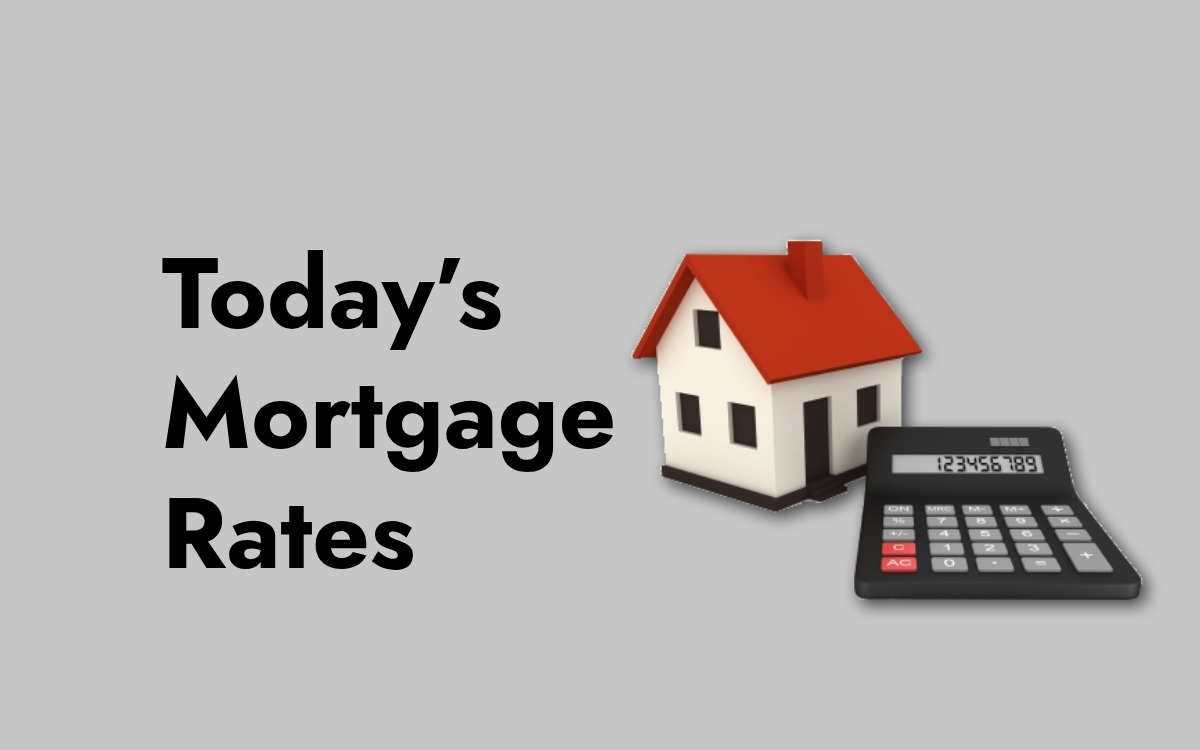The following are the current average annual percentage rates (APR) for 30-year, 15-year, and 5/1 ARM mortgages:
What are today’s mortgage rates?
A 30-year fixed-rate mortgage
Today: The benchmark 30-year fixed mortgage has an average APR of 7.30% today.
Last week: APR was 7.27%
15-year fixed-rate mortgage.
- Today: The average APR for a 15-year fixed-rate mortgage is 6.58%
- Last week: 6.54%
30-year fixed-rate jumbo mortgage.
Today: The average APR for a 30-year fixed-rate jumbo mortgage is 7.31%.
Last week: 7.37%
ARE YOU LOOKING FOR MORTGAGE LOAN?
Here are our best recommendations

- Est. APR = 9.95% - 14%
- Loan Amount = $150,000 - $3,000,000
- Minimum FICO Score: N/A
5
editorial team. We score based on factors
that are helpful for consumers, such as
how it affects credit scores, the rates and
fees charged, the customer experience,
and responsible lending practices.

- 24/7 Support
- Bridge & Rental Loans
- Equal Housing Opportunity
5
editorial team. We score based on factors
that are helpful for consumers, such as
how it affects credit scores, the rates and
fees charged, the customer experience,
and responsible lending practices.
- Check Your Eligibility
- Equal Housing Opportunity
5
editorial team. We score based on factors
that are helpful for consumers, such as
how it affects credit scores, the rates and
fees charged, the customer experience,
and responsible lending practices.
Mortgage Rate Trends
Today’s Mortgage Interest Rates by Term
| LOAN TERM | INTEREST RATE | APR | MONTHLY P&I PER $100,000 |
| 30-Year Fixed | $420,900 | $383,800 | $37,100 |
| 15-Year Fixed | $436,900 | $392,900 | $44,000 |
| 30-Year Jumbo | $417,900 | $406,600 | $11,300 |
Related: Joint Home Loan: Multiple People on a Home Loan
How Current Interest Rates Affect Your Monthly Payments
If you know how much you're borrowing, what type of loan you're obtaining, and how many years you have to repay it, you may use a mortgage calculator to calculate your monthly payment at various interest rates.
For example, if you start with a loan balance of $425,000 on a 30-year fixed-rate mortgage, here's what you can anticipate to pay in principal and interest each month, excluding taxes, mortgage insurance, homeowners insurance, and HOA fees:
- At a five percent interest rate. Monthly payments total $2,281 (without taxes, mortgage insurance, homeowners insurance, and HOA fees).
- With a 6% interest rate. Monthly payments total $2,548 (without taxes, mortgage insurance, homeowners insurance, and HOA fees).
- With a 7% interest rate. Monthly payments total $2,828 (without taxes, mortgage insurance, homeowners insurance, and HOA fees).
- With an 8% interest rate. Monthly payments total $3,119 (without taxes, mortgage insurance, homeowners insurance, and HOA fees).
How APR & interest rates are different?
The interest rate is the cost of borrowing money, whereas the APR is the annual cost of borrowing including lender fees and other mortgage-related charges.
The annual percentage rate (APR) is the entire cost of your loan and is the most important metric to consider when comparing rates. Some lenders may provide a lower interest rate, but their fees are higher than other lenders (with higher rates and lower fees), thus you should evaluate APR rather than just interest rate. In some situations, the costs can be significant enough to negate the benefits of a low rate.
How do you shop for mortgage rates?
First, compare rates. You can find current average rates from lenders by checking online or calling them. You should also evaluate lender fees, as some lenders demand more fees to complete your loan.
Thousands of mortgage lenders compete for your business. So, to ensure you get the best mortgage rates, apply with at least three lenders and discover which one offers the lowest rate.
Each lender is obligated to provide a loan estimate. This three-page standardized document will show you the loan's interest rate and closing costs, as well as other important information including how much the loan will cost you over the first five years.
Related: Current Mortgage Refinance Rates July 2024
What Affects Current Mortgage Rates?
- The Federal Reserve's monetary policy. Mortgage rates are indirectly affected by the Federal Reserve's monetary policies. When the central bank lifts the federal funds target rate, as it did in 2022 and 2023, it causes short-term interest rates to rise. As a result, interest rates for house loans tend to rise as lenders pass on greater borrowing costs to customers.
- Lenders. A lender with physical offices and a large overhead may charge higher interest rates to cover operating costs and profit from the mortgage business. On the other side, lenders who only operate online tend to provide cheaper mortgage rates since they have less fixed costs to pay.
- Your credit. Your personal credit history also influences the mortgage rate you qualify for. Borrowers with a great credit history and a decent credit score (at least 680) normally pay a lower interest rate, whereas borrowers with a low credit score—who lenders consider high risk—pay a higher interest rate.

- Est. APR = 9.95% - 14%
- Loan Amount = $150,000 - $3,000,000
- Minimum FICO Score: N/A
5
editorial team. We score based on factors
that are helpful for consumers, such as
how it affects credit scores, the rates and
fees charged, the customer experience,
and responsible lending practices.

- 24/7 Support
- Bridge & Rental Loans
- Equal Housing Opportunity
5
editorial team. We score based on factors
that are helpful for consumers, such as
how it affects credit scores, the rates and
fees charged, the customer experience,
and responsible lending practices.
- Check Your Eligibility
- Equal Housing Opportunity
5
editorial team. We score based on factors
that are helpful for consumers, such as
how it affects credit scores, the rates and
fees charged, the customer experience,
and responsible lending practices.



 Read More
Read More 




